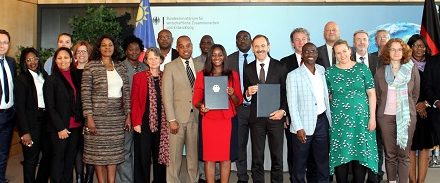
Fisheries to rethink freshwater aquaculture
According to the Ministry of Fisheries, legislation and regulations changes are needed to ensure parity with other food production sectors in advancing the promoting of pro-poor uptake of freshwater aquaculture.
Current freshwater fish production is low with estimates of only 50-100 tonnes per year even with the establishment of a series of Inland Aquaculture Centres and farms in Omusati, Oshana, Kavango, Otjozondjupa and Zambezi Regions and a fish feed plan with an annual capacity of 1 200 tonnes with assistance from the Spanish Government in Omahene.
Between 2003 and 2009 government has invested N$126 million in freshwater aquaculture development.
The National Aquaculture Master Plan for Freshwater aquaculture estimates that half of the 10kg of fish per capita originates from freshwater fish farming. Even though the general international market for freshwater fish is highly competitive, significant market opportunities exist in the SADC region and in the domestic market.
With small operations of 100 tonnes per farming units dispersed regionally to meet local consumption, 40 farms could be constructed country wide according to the Freshwater Aquaculture Master Plan for 2013 – 2023.
The Master Plan intends to strengthen gains from the initial phase and focus on the second phase of developing a and diversifying production of freshwater fish and also to identify constraints and interventions needed.
According to the ministry, this move could create a potential of 560 jobs nationally and around 200 construction and maintenance related employment. Assuming a gate value of N$92 million at N420/kg this could potentially create within the mainly rural economy N$9 million annually.
The production of 4 000 tonnes of freshwater fish needs 6 000 tonnes of feed.
Currently the Agricultural Bank of Namibia and the Development Bank are the two main financial institutions supporting investment in aquaculture.
Financing these new initiatives and the expansion of facilities and marketing is possible through loans that are obtainable through short, medium and long term loans of a maximum 3 , 5 and 10 year period individually.
According to the Freshwater Aquaculture Master plan these institutions, however, operate in a a formal business sector and trapping financing remains a complex and often beyond the reach of small-scale producers. This limits the small-scale producers.
The Agricultural Bank and the Ministry of Fisheries and Marine Resources have developed guidelines for evaluation and financing aquaculture business.
“These guidelines will go some way in helping applicants increase the probability of acquiring finance at a subsidised annual interest rate of 5%,” the ministry added.
Additionally, an agreement between the two was signed in March 2010 to disburse N$32 million over a four year period.
Meanwhile, the revision of existing financial assistance programmes for freshwater aquaculture aim to create new financial assistance programmes for appropriate low-cost aquaculture production technologies for well-established species. Amongst others appropriate research and development for investment promotion.











































